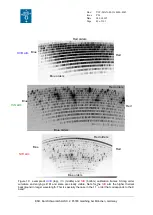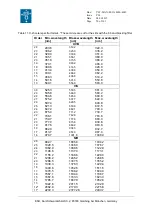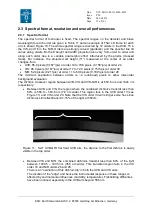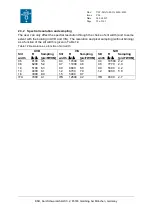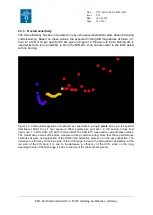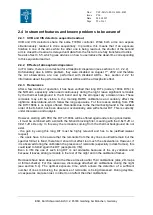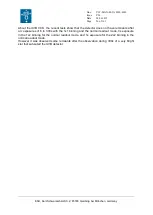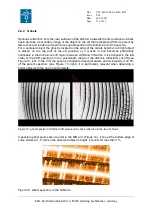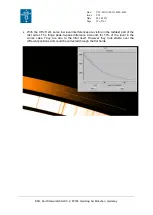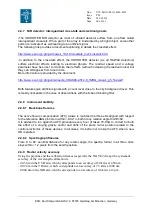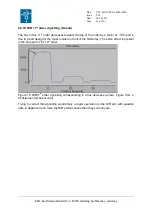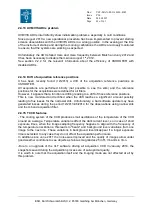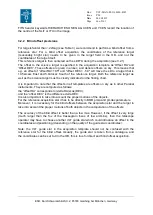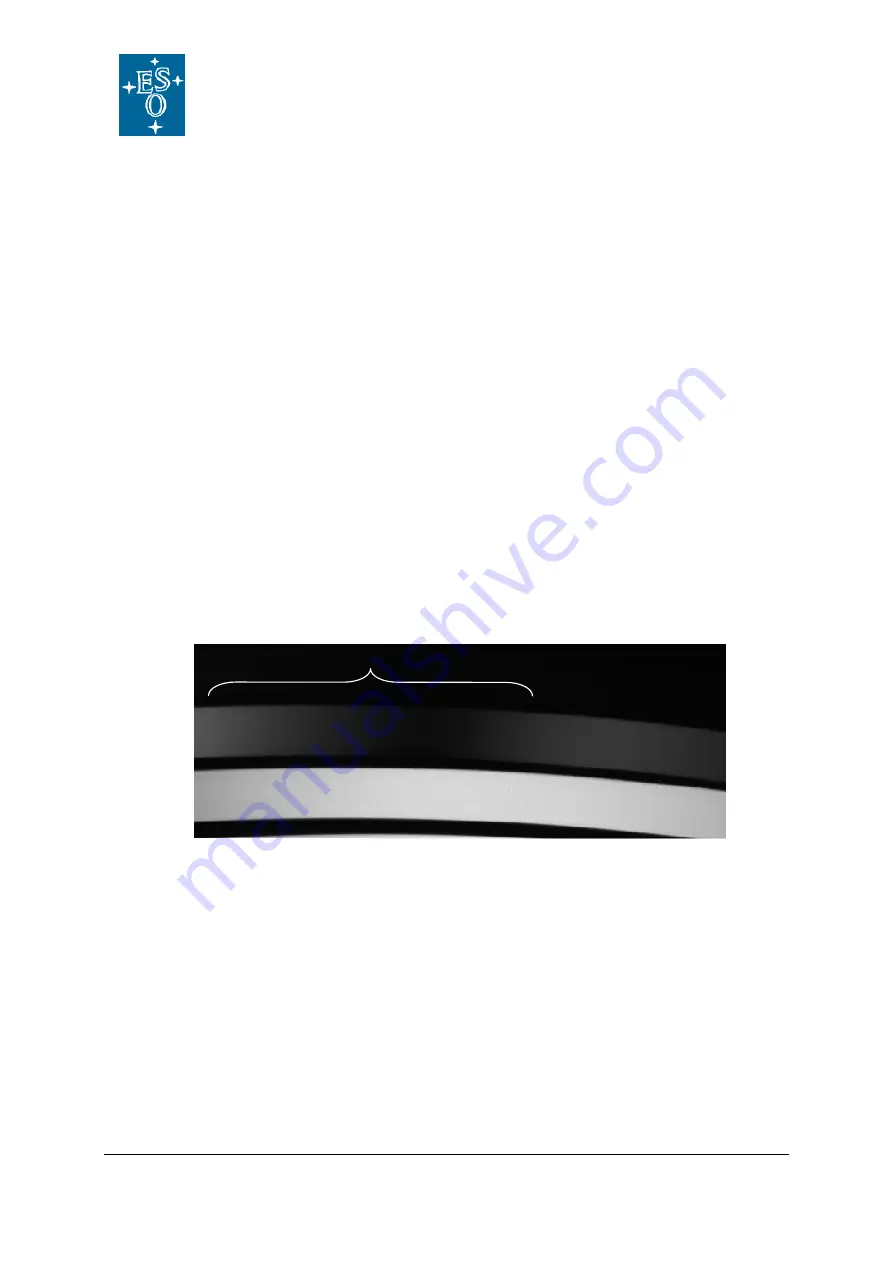
Doc:
Issue
Date
Page
VLT-MAN-ESO-14650-4942
P96
24.06.2015
51 of 161
ESO, Karl-Schwarzschild-Str. 2, 85748 Garching bei München, Germany
2.3 Spectral format, resolution and overall performances
2.3.1 Spectral format
The spectral format of X-shooter is fixed. The spectral ranges on the detector and blaze
wavelength for each order are given in Table 11 and an example of ThAr slit frame for each
arm is shown Figure 10. The whole spectral range is covered by 12 orders in the UVB, 15 in
the VIS, and 16 in the NIR. Orders are strongly curved (parabolic) and the spectral line tilt
varies along orders. Both slit height and width projection also vary from order to order and
along each order due to a variable anamorphic effect introduced by the prisms (crossed
twice). For instance, the projected slit height (11”) measured at the center of an order
changes from:
UVB: 65.9 pixels (0.167“/pix) at order 14 to 70.8 pixels (0.155”/pix) at order 24
VIS: 65.9 pixels (0.167”/pix) at order 17 to 72.0 pixels (0.153”/pix) at order 30
NIR: 52.4 pixels (0.21”/pix) at order 11 to 59.9 pixels (0.184”/pix) at order 26
The minimum separation between orders is ~4 (unbinned) pixels to allow inter-order
background evaluation.
The dichroic crossover region between UVB-VIS and VIS-NIR is at 559.5 nm and 1024 nm
respectively:
Between UVB and VIS, the region where the combined dichroics transmit less than
80% is 556.0 -- 563.8 nm (7.8 nm wide). This region falls in the UVB order 13 (see
Figure 11) and VIS order 29. Note that the VIS order 30 will still get some flux since
dichroics still reflect/transmit ~15% of the light at 550nm.
Figure 11: SLIT UVB QTH flat field, UVB arm, the dip due to the first dichroic is easily
visible in the top order.
Between VIS and NIR, the combined dichroics transmit less than 80% of the light
between 1009.5 – 1035 nm (35.5 nm wide). This transition region falls in the VIS
order 16 and NIR orders 26 and 25.
There is an “oscillation of this dichroic dip” in both the UVB and VIS arms.
The location of the "edge" and hence the instrumental response in these ranges is
affected by environmental influences (humidity, temperature). Flat-fielding difficulties
have been noticed, especially in the UVB arm beyond 556 nm.













